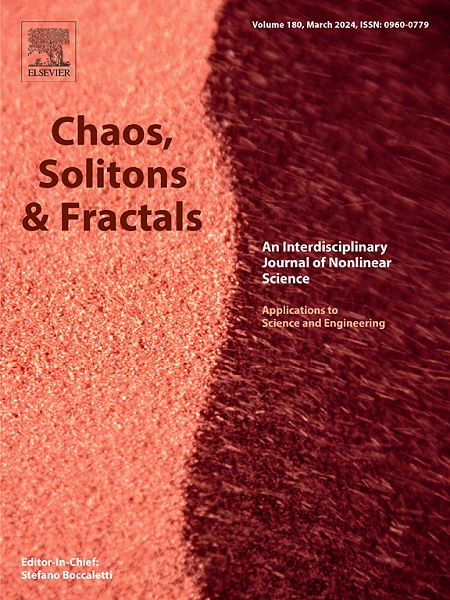通过卡多姆采夫-彼得维亚什维利还原法求解耦合广塔方程的一般孤子解
IF 5.3
1区 数学
Q1 MATHEMATICS, INTERDISCIPLINARY APPLICATIONS
引用次数: 0
摘要
本文讨论了耦合Hirota方程的各种孤子解,以及Sasa-Satsuma方程的各种孤子解,Sasa-Satsuma方程可以看作是耦合Hirota方程的一种化简情况。首先,我们利用Kadomtsev-Petviashvili约简方法推导出耦合Hirota方程的亮-亮、暗-暗和亮-暗孤子解。然后,我们给出了Sasa-Satsuma方程的明孤子解和暗孤子解,它们在文献中由N×N的行列式而不是2N×2N的行列式表示。详细研究了一阶、二阶解的动力学问题。有趣的是,对于SS方程,N=1的亮孤子也是复mKdV方程的孤子,而N=1的暗孤子的振幅和速度是由背景平面波决定的。当N=2时,亮孤子可分为振荡、单驼峰和双驼峰三种类型,暗孤子可分为暗(单孔)、反暗、墨西哥帽、反墨西哥帽和双孔五种类型。此外,Sasa-Satsuma方程的亮孤子类型可以由于碰撞而改变。本文章由计算机程序翻译,如有差异,请以英文原文为准。
General soliton solutions to the coupled Hirota equation via the Kadomtsev–Petviashvili reduction
In this paper, we are concerned with various soliton solutions to the coupled Hirota equation, as well as to the Sasa–Satsuma equation which can be viewed as one reduction case of the coupled Hirota equation. First, we derive bright–bright, dark–dark, and bright–dark soliton solutions of the coupled Hirota equation by using the Kadomtsev–Petviashvili reduction method. Then, we present the bright and dark soliton solutions to the Sasa–Satsuma equation which are expressed by determinants of instead of in the literature. The dynamics of first-, second-order solutions are investigated in detail. It is intriguing that, for the SS equation, the bright soliton for is also the soliton to the complex mKdV equation while the amplitude and velocity of dark soliton for are determined by the background plane wave. For , the bright soliton can be classified into three types: oscillating, single-hump, and double-hump ones while the dark soliton can be classified into five types: dark (single-hole), anti-dark, Mexican hat, anti-Mexican hat and double-hole. Moreover, the types of bright solitons for the Sasa–Satsuma equation can be changed due to collision.
求助全文
通过发布文献求助,成功后即可免费获取论文全文。
去求助
来源期刊

Chaos Solitons & Fractals
物理-数学跨学科应用
CiteScore
13.20
自引率
10.30%
发文量
1087
审稿时长
9 months
期刊介绍:
Chaos, Solitons & Fractals strives to establish itself as a premier journal in the interdisciplinary realm of Nonlinear Science, Non-equilibrium, and Complex Phenomena. It welcomes submissions covering a broad spectrum of topics within this field, including dynamics, non-equilibrium processes in physics, chemistry, and geophysics, complex matter and networks, mathematical models, computational biology, applications to quantum and mesoscopic phenomena, fluctuations and random processes, self-organization, and social phenomena.
 求助内容:
求助内容: 应助结果提醒方式:
应助结果提醒方式:


